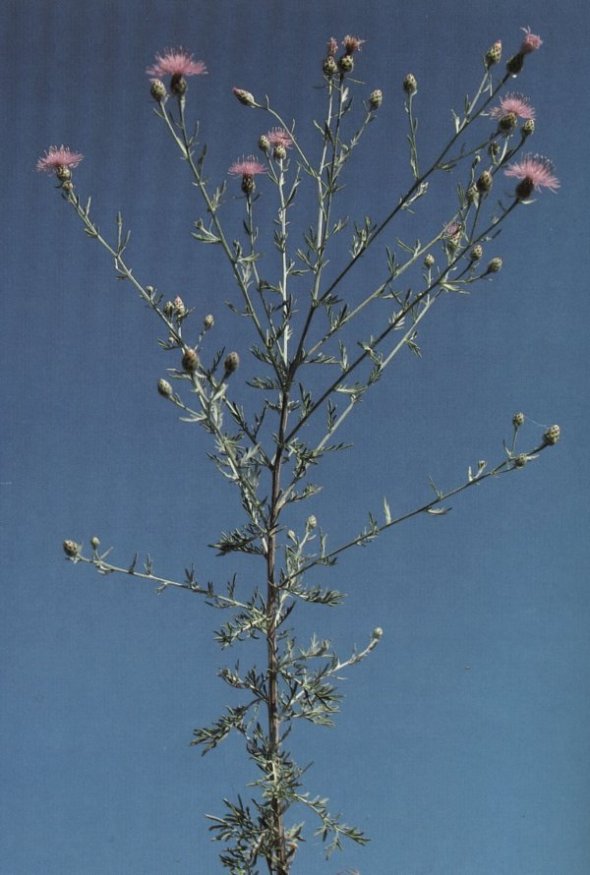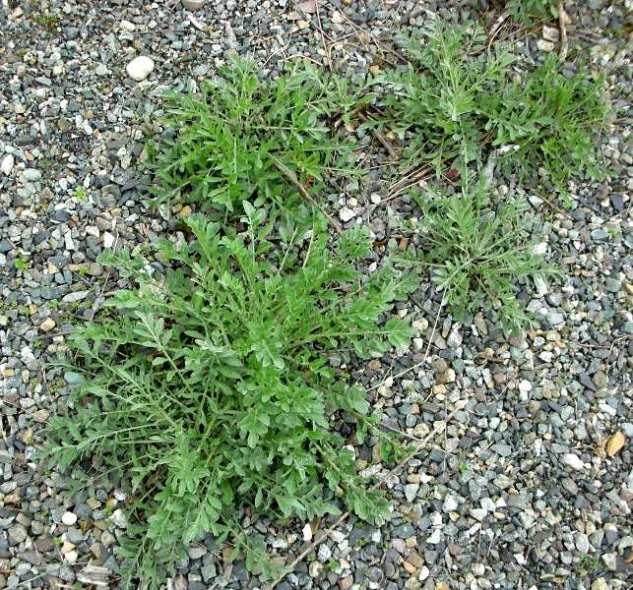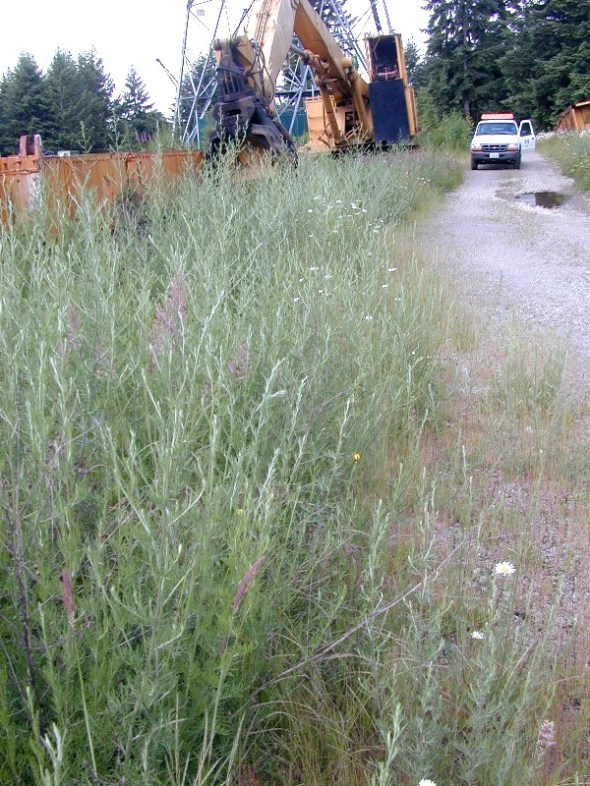Spotted Knapweed
Continuing the “countdown” of top ten invasive plants here on Beaver Island, let me introduce Spotted Knapweed.
This herbaceous (non-woody) perennial has a unique island story. I made several attempts to have my facts verified and clarified last week, which resulted in only delays. I am betting that – if I get the story wrong – I’ll quickly be given the corrections, so I’m going to tell it as I’ve heard it. Beaver Island is big on nicknames. Over the years we’ve heard names from “Tight” Gallagher to “Killer” Burke to “Red Pup” and “Hannah”.
This invasive plant has a Beaver Island nickname, too. Here, it is often referred to as “Denemy Thistle”. It was unintentionally brought to the island in a load of hay that William “Denemy” Boyle (a relative, by marriage, of “Harlem” Gallagher) shipped over. It came here when agriculture was still an important industry on Beaver Island, and was noticed right away as an aggressive and unwelcome weed. My grandfather, George Ricksgers, worked very hard to keep it out of his own fields and pastures, and was successful for a while.
Like all invasive plants, the Spotted Knapweed has advantages over native growth. Along with aggressive growth habit, prolific seed production and a long tap root, Spotted Knapweed is phytotoxic, meaning it is poisonous to other plants. That’s quite an advantage, in taking over an area! It thrives in what are called “artificial corridors”: gravel pits, roadsides, field margins, overgrazed pasture land and beaches. It can quickly take over an area, eliminating pasture, native growth and wildlife habitat. On our beaches, it is a big threat to the piping plover.
When pulling this weed, keep in mind that it looks similar, in some stages of it’s growth, to the endangered and federally protected Pitcher’s Thistle, which is an important part of our natural flora. When in doubt, do a bit more research or ask an expert. The other thing to be aware of is that Spotted Knapweed releases an irritant chemical, so gloves should be worn when in contact with it.
If you’d like more information about this, or any of our top 10 invasive species, the brochure put together by the Beaver Island Association is an excellent resource. Copies are available – free – in the lobby of the Community Center.
If you’d like to be involved in group projects to help control or eradicate invasive plants, please let me know!
Spotted Knapweed in its first year, rosette stage…
…and here, quickly taking over a construction site.
Let’s continue gaining awareness and working together to protect our beautiful island!



Reblogged this on cindyricksgers and commented:
Yet another invasive plant…
Hi Cindy, I would like to help with eradication efforts when I am on the island. Our land line is 3900. My email is sscreven@msn.com
We will be there June 25. Please let me know what’s happening.
Sue, I always look forward to your presence here. Thanks so much for your offer to help! I’ll add your name to my contact list, and will definitely be in touch!